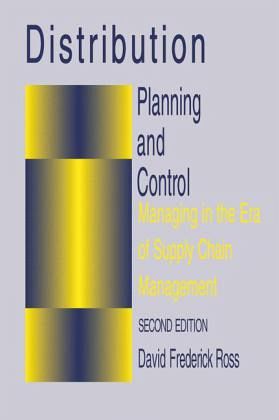Nicht lieferbar

Distribution Planning and Control
Managing in the Era of Supply Chain Management
Versandkostenfrei!
Nicht lieferbar
Weitere Ausgaben:
When work began on the first volume ofthis text in 1992, the science of dis tribution management was still very much a backwater of general manage ment and academic thought. While most of the body of knowledge associated with calculating EOQs, fair-shares inventory deployment, productivity curves, and other operations management techniques had long been solidly established, new thinking about distribution management had taken a definite back-seat to the then dominant interest in Lean thinking, quality management, and business process reengineering and their impact on manufacturing and service ...
When work began on the first volume ofthis text in 1992, the science of dis tribution management was still very much a backwater of general manage ment and academic thought. While most of the body of knowledge associated with calculating EOQs, fair-shares inventory deployment, productivity curves, and other operations management techniques had long been solidly established, new thinking about distribution management had taken a definite back-seat to the then dominant interest in Lean thinking, quality management, and business process reengineering and their impact on manufacturing and service organizations. For the most part, discussion relating to the distri bution function centered on a fairly recent concept called Logistics Manage ment. But, despite talk of how logistics could be used to integrate internal and external business functions and even be considered a source of com petitive advantage on its own, most of the focus remained on how companies could utilize operations management techniques to optimize the traditional day-to-day shipping and receiving functions in order to achieve cost contain ment and customer fulfillment objectives. In the end, distribution manage ment was, for the most part, still considered a dreary science, concerned with oftransportation rates and cost trade-offs. expediting and the tedious calculus Today, the science of distribution has become perhaps one of the most im portant and exciting disciplines in the management of business.




